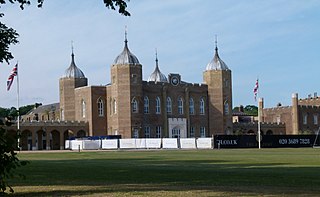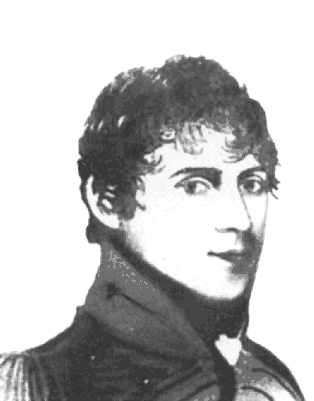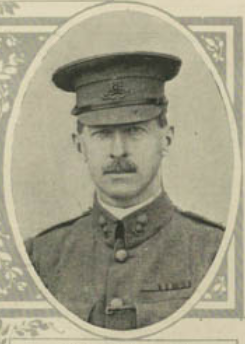Related Research Articles

The Royal Military Academy (RMA) at Woolwich, in south-east London, was a British Army military academy for the training of commissioned officers of the Royal Artillery and Royal Engineers. It later also trained officers of the Royal Corps of Signals and other technical corps. RMA Woolwich was commonly known as "The Shop" because its first building was a converted workshop of the Woolwich Arsenal.

Field Marshal Sir John Fox Burgoyne, 1st Baronet, was a British Army officer. After taking part in the Siege of Malta during the French Revolutionary Wars, he saw action under Sir John Moore and then under the Duke of Wellington in numerous battles of the Peninsular War, including the Siege of Badajoz and the Battle of Vitoria. He served under Sir Edward Pakenham as chief engineer during the War of 1812. He went on to act as official advisor to Lord Raglan during the Crimean War advocating the Bay of Kalamita as the point of disembarkation for allied forces and recommending a Siege of Sevastopol from the south side rather than a coup de main, so consigning the allied forces to a winter in the field in 1854.

General Sir James Frederick Noel Birch was a British Royal Artillery officer during the Second Boer War and the First World War who served as Master-General of the Ordnance from 1923 to 1927. The Birch gun was named after him.

General Alexander Cavalié Mercer was a British Army officer of the Royal Horse Artillery. He is most notable as commander of G Troop Royal Horse Artillery at the Battle of Waterloo, and as author of Journal of the Waterloo Campaign.
General Sir Thomas Blomefield, 1st Baronet of Attleborough, Norfolk, was colonel-commandant royal artillery, to whose untiring labours as Inspector of Artillery and Superintendent of the Royal Foundries that the progress of the British artillery during the Napoleonic Wars was largely due.
Lieutenant-General Sir William Brereton was a British Army officer of the nineteenth century who served as colonel-commandant of the 4th Brigade, Royal Horse Artillery in the 1860s.
George Fead (1729?–1815), was a lieutenant-general and colonel-commandant fourth battalion Royal Artillery.
Colonel Commandant Sir Richard Williams (1764–1839) was a career British officer of the Royal Marines active during the American Revolutionary War, the French Revolutionary Wars, the Napoleonic Wars, and the War of 1812.
General Thomas Adams Parke, was a career officer in the Royal Marines. Associated with the Royal Marine Artillery (RMA) of the nineteenth century Royal Marines; he was for many years commandant of that corps. Toward the end of his long and distinguished service, he led the Woolwich Division of the Royal Marines as Colonel Commandant.
The ML 8-inch shell guns of 50 cwt, 54 cwt and 65 cwt were the three variants of British cast iron smoothbore muzzle-loading guns designed specifically to fire the new generation of exploding shells pioneered in the early to mid-nineteenth century by Henri-Joseph Paixhans.
Major-General James Murray Hadden was a British Army officer and surveyor-general of the ordnance.
Lieutenant-Colonel Joseph Brome was a British Royal Artillery officer who served during the Napoleonic Wars.
Lieutenant-General James Webber Smith CB (1778–1853) was a British Royal Artillery officer who fought in the French Revolutionary Wars and Napoleonic Wars.
Lieutenant-General Thomas Desaguliers was a British Army general and a Colonel Commandant of the Royal Artillery.
Lieutenant-General Sir Wiltshire Wilson was a general officer of the British Army who served in the Royal Artillery for some forty-five years, including several campaigns of the Revolutionary and Napoleonic Wars.

Brigadier-General Neil Douglas Findlay was a British Army general. A Royal Artillery officer, Findlay served in action on the Hazara Expedition of 1888 and in the Second Boer War. He was commended by General Redvers Buller for his actions during the latter and subsequently became a staff officer. After the outbreak of the First World War Findlay was promoted to brigadier general and appointed Commander, Royal Artillery of the 1st Infantry Division. Whilst serving in this capacity during the First Battle of the Aisne Findlay was hit by shrapnel from a German shell and killed. He was the first British general to be killed in the war.
General Sir Edward Charles Whinyates, was a senior British Army artillery officer.
General Sir Alexander Lindsay KCB was an officer in both the British and East India Company armies. Commissioned into the British Army at the age of nine, he was placed on half-pay after the 104th Regiment of Foot was disbanded in 1795.
The Fifeshire Militia was an auxiliary regiment raised in Fifeshire, Scotland, in 1798. It served in home defence during the Napoleonic Wars and again during the Crimean War when it was converted into an artillery unit as the Fifeshire Artillery Militia. It served in home defence again during the Indian Mutiny and the Second Boer War. It was disbanded in 1909.

General Sir James Frankfort Manners BrowneKCB, Colonel-Commandant of Royal Engineers, was an Anglo-Irish officer in the British Army.
References
 This article incorporates text from a publication now in the public domain : Chichester, Henry Manners (1894). "Millar, William". In Lee, Sidney (ed.). Dictionary of National Biography . Vol. 37. London: Smith, Elder & Co. p. 404.
This article incorporates text from a publication now in the public domain : Chichester, Henry Manners (1894). "Millar, William". In Lee, Sidney (ed.). Dictionary of National Biography . Vol. 37. London: Smith, Elder & Co. p. 404.- Kane's Lists Roy. Artillery, rev. ed., Woolwich, 1869;
- Official Catalogue Museum of Artillery;
- Dupin's Voyages dans la Grande-Bretagne;
- Sir Howard Douglas's Naval Gunnery;
- Naval and Military Gazette, 17 and 24 March 1838.